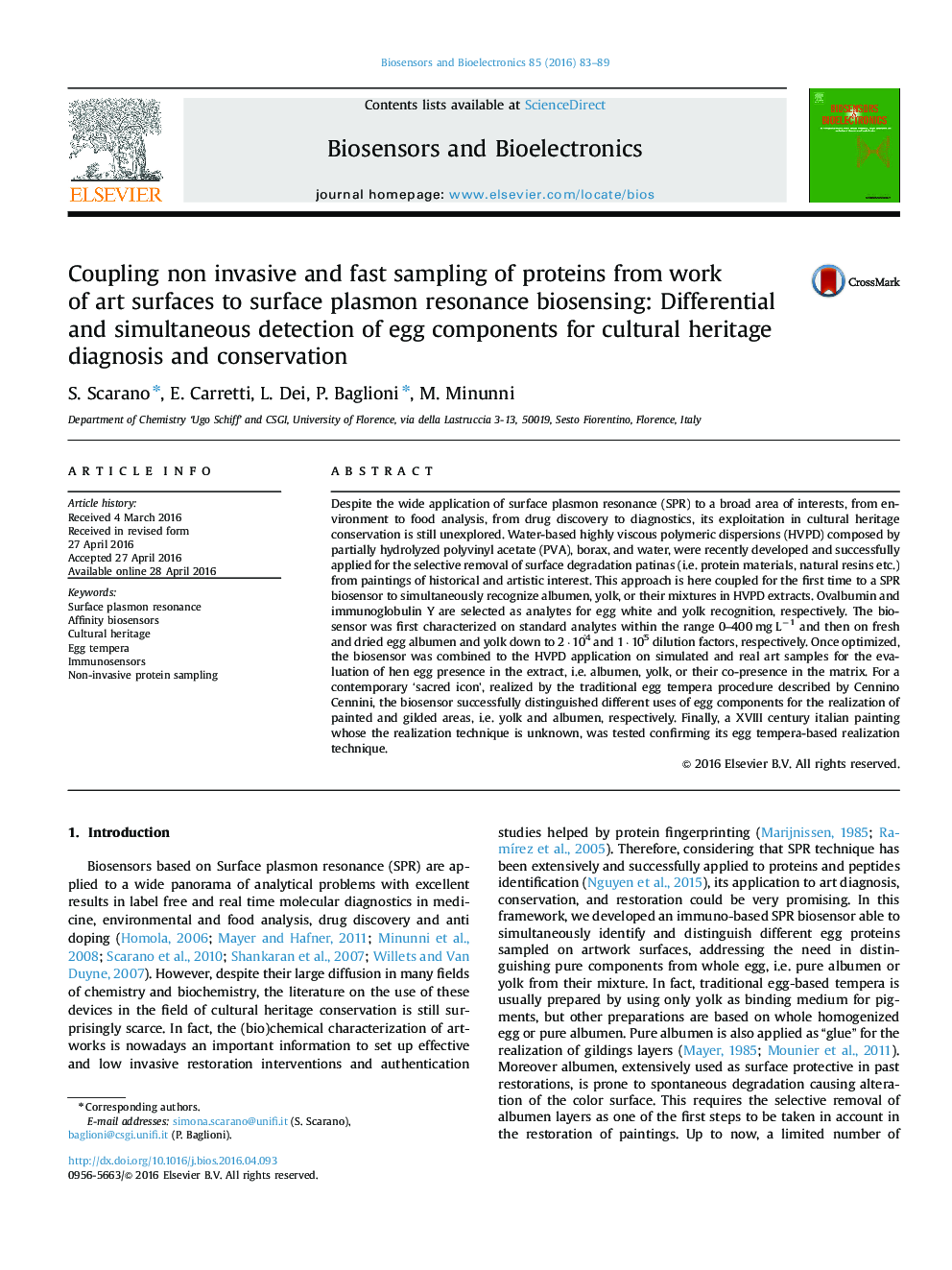| Article ID | Journal | Published Year | Pages | File Type |
|---|---|---|---|---|
| 7230271 | Biosensors and Bioelectronics | 2016 | 7 Pages |
Abstract
Despite the wide application of surface plasmon resonance (SPR) to a broad area of interests, from environment to food analysis, from drug discovery to diagnostics, its exploitation in cultural heritage conservation is still unexplored. Water-based highly viscous polymeric dispersions (HVPD) composed by partially hydrolyzed polyvinyl acetate (PVA), borax, and water, were recently developed and successfully applied for the selective removal of surface degradation patinas (i.e. protein materials, natural resins etc.) from paintings of historical and artistic interest. This approach is here coupled for the first time to a SPR biosensor to simultaneously recognize albumen, yolk, or their mixtures in HVPD extracts. Ovalbumin and immunoglobulin Y are selected as analytes for egg white and yolk recognition, respectively. The biosensor was first characterized on standard analytes within the range 0-400 mg Lâ1 and then on fresh and dried egg albumen and yolk down to 2·10^4 and 1·10^5 dilution factors, respectively. Once optimized, the biosensor was combined to the HVPD application on simulated and real art samples for the evaluation of hen egg presence in the extract, i.e. albumen, yolk, or their co-presence in the matrix. For a contemporary 'sacred icon', realized by the traditional egg tempera procedure described by Cennino Cennini, the biosensor successfully distinguished different uses of egg components for the realization of painted and gilded areas, i.e. yolk and albumen, respectively. Finally, a XVIII century italian painting whose the realization technique is unknown, was tested confirming its egg tempera-based realization technique.
Related Topics
Physical Sciences and Engineering
Chemistry
Analytical Chemistry
Authors
S. Scarano, E. Carretti, L. Dei, P. Baglioni, M. Minunni,
